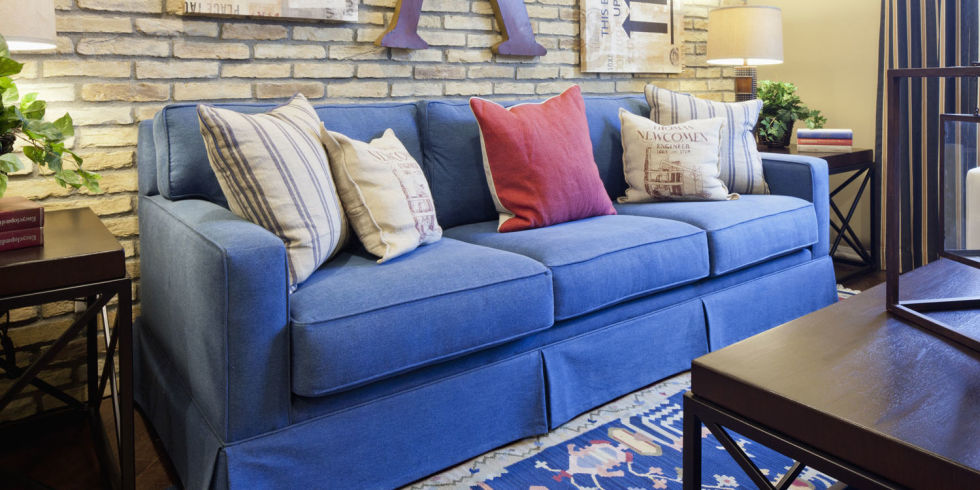
1. Check the Frame
A sturdy frame means a long-lasting sofa. Soft wood, such as pine, is low-cost, but it may warp or wobble after five years. Pricier hardwood (kiln-dried oak, ash, or beech, for example) is more durable. Avoid frames made of particleboard, plastic, or metal; they may warp and crack. Legs should be part of the frame or held on with screws or dowels (pegs) — not with glue alone.
Tip: To test frame strength, lift one front corner or leg of the sofa off the floor. By the time you've raised it six inches, the other front leg should have risen too. If it's still touching the floor, the frame has too much give; it's weak.
2. Ask About Joinery
A frame with joints connected by any of the following means is solidly constructed: wooden dowels, double wooden dowels, wooden corner blocks (the tag might read corner blocks glued and screwed), or metal screws and brackets. Staples or nails may be used for extra reinforcement, but never buy a sofa that's held together solely by staples, nails, or glue.
Tip: Ask your salesperson for written manufacturer information on frame joinery.
3. Test the Springs
Most sofas have sinuous, also called serpentine, springs — preassembled units of snaking wire. They're nicely supportive, but they can press on the frame or sag over time if the metal isn't heavy. High-end sofas often come with "eight-way hand-tied springs." They're comfy but expensive; some experts feel they're no better than serpentines. Feel the springs through the upholstery — they should be close together and firm. Sofas with no springs, just webbing or mesh, are uncomfortable and flimsy.
Tip: Sit down firmly on a corner or outside edge of a sofa you're considering. Squeaks and creaks suggest that springs are incorrectly placed or hitting the frame.
4. Feel Your Fillings
Polyurethane foam is a low-cost, easy-care cushion filling. But the more durable, high-density type can feel hard, and softer, low-density foam deteriorates more rapidly with constant use. High-resilient (HR) foam is slightly more expensive but more comfortable and long-lasting. Polyester fiber is also inexpensive, but it flattens quickly. Goose- and duck-feather fillings are comfy, but they can clump. Top of the line: goose down (the bird's soft undercoat) mixed with feathers. The combo is yummily plump, expensive (about double the price of foam), and high maintenance; cushions need frequent fluffing. A down-polyfiber blend is cheaper, but it flattens fast.
Tip: Two good options that are comfortable and reasonably priced: HR foam in a layer of down and conventional foam wrapped in polyester batting.
5. Find Tough Textiles
Sofas for everyday use need durable fabric. Cotton and linen are winners (but watch out for loose weaves — they can snag). Also terrific: synthetic microfiber, which can mimic most fabrics and is stain resistant. Cotton and linen can be treated for stain resistance, but even then they aren't as easy to clean, or as durable, says Kathleen Huddy, the GH Research Institute's textiles, paper, and plastics director. Blends of natural and synthetic fibers tend to pill within a year. Wool and leather are handsome and strong but expensive. Silk is sleek but fragile. Fabrics with patterns woven in tend to wear better than those with printed patterns.
Tip: Ask the store for a piece of fabric larger than the usual swatch. Place it where the sofa will go. View it in natural and artificial light — and see how much you still like it after a few days.
Original article and pictures take ghk.h-cdn.co site
Комментариев нет:
Отправить комментарий